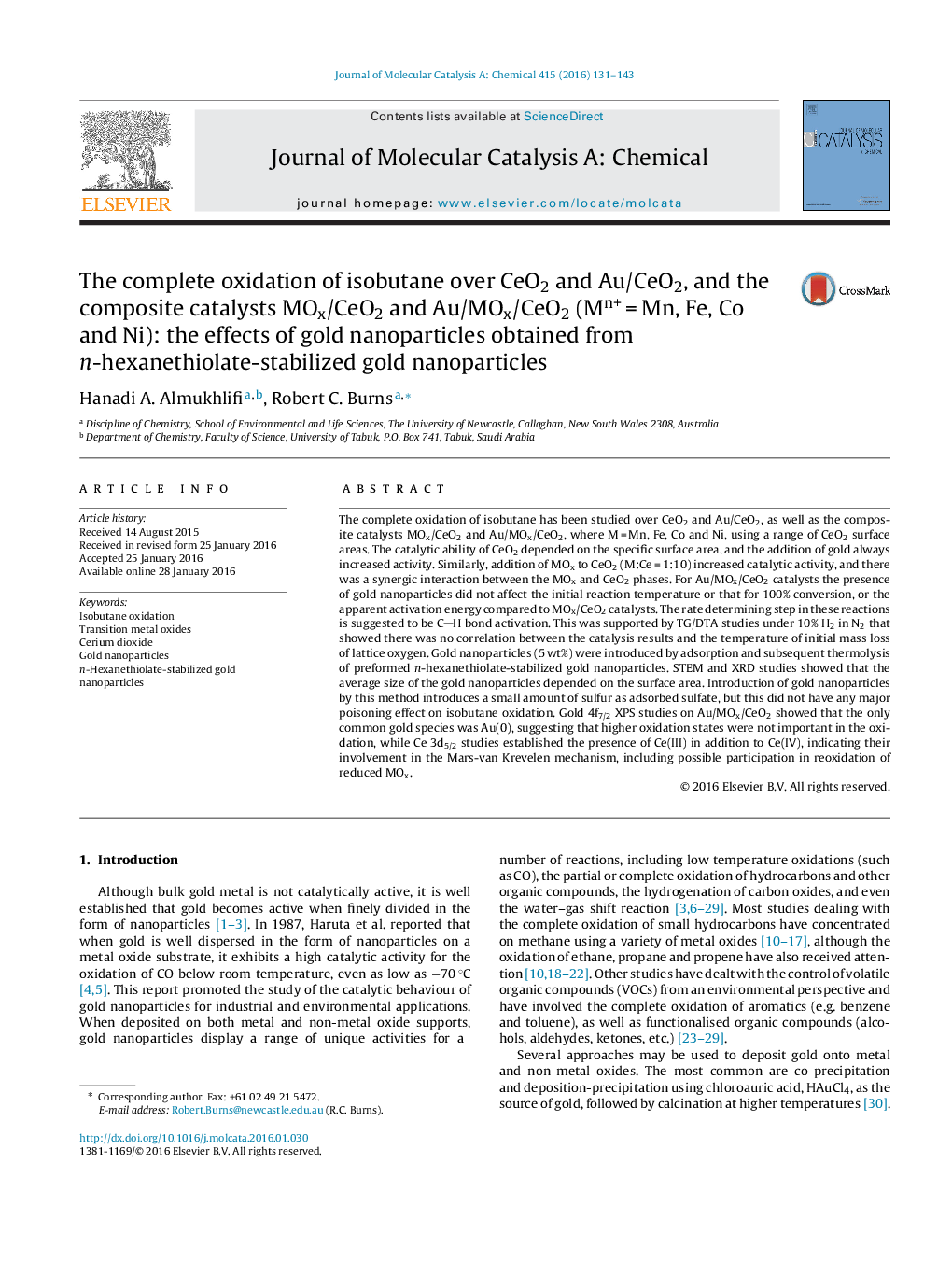| کد مقاله | کد نشریه | سال انتشار | مقاله انگلیسی | نسخه تمام متن |
|---|---|---|---|---|
| 64697 | 48366 | 2016 | 13 صفحه PDF | دانلود رایگان |

• Au/CeO2 is an active catalyst for the complete oxidation of isobutane.
• Au nanoparticles from n-C6SAu nanoparticles enhance catalytic activity of CeO2.
• MOx/CeO2 (M = Mn, Fe, Co, Ni) are active catalysts for the complete oxidation of i-C4H10.
• Rate determining step for Au/MOx/CeO2 catalysts is activation of a CH bond.
• Au 4f7/2 XPS suggests that Au° rather than Au+ or Au3+ is important in catalysis.
The complete oxidation of isobutane has been studied over CeO2 and Au/CeO2, as well as the composite catalysts MOx/CeO2 and Au/MOx/CeO2, where M = Mn, Fe, Co and Ni, using a range of CeO2 surface areas. The catalytic ability of CeO2 depended on the specific surface area, and the addition of gold always increased activity. Similarly, addition of MOx to CeO2 (M:Ce = 1:10) increased catalytic activity, and there was a synergic interaction between the MOx and CeO2 phases. For Au/MOx/CeO2 catalysts the presence of gold nanoparticles did not affect the initial reaction temperature or that for 100% conversion, or the apparent activation energy compared to MOx/CeO2 catalysts. The rate determining step in these reactions is suggested to be CH bond activation. This was supported by TG/DTA studies under 10% H2 in N2 that showed there was no correlation between the catalysis results and the temperature of initial mass loss of lattice oxygen. Gold nanoparticles (5 wt%) were introduced by adsorption and subsequent thermolysis of preformed n-hexanethiolate-stabilized gold nanoparticles. STEM and XRD studies showed that the average size of the gold nanoparticles depended on the surface area. Introduction of gold nanoparticles by this method introduces a small amount of sulfur as adsorbed sulfate, but this did not have any major poisoning effect on isobutane oxidation. Gold 4f7/2 XPS studies on Au/MOx/CeO2 showed that the only common gold species was Au(0), suggesting that higher oxidation states were not important in the oxidation, while Ce 3d5/2 studies established the presence of Ce(III) in addition to Ce(IV), indicating their involvement in the Mars-van Krevelen mechanism, including possible participation in reoxidation of reduced MOx.
Figure optionsDownload high-quality image (144 K)Download as PowerPoint slide
Journal: Journal of Molecular Catalysis A: Chemical - Volume 415, 1 May 2016, Pages 131–143